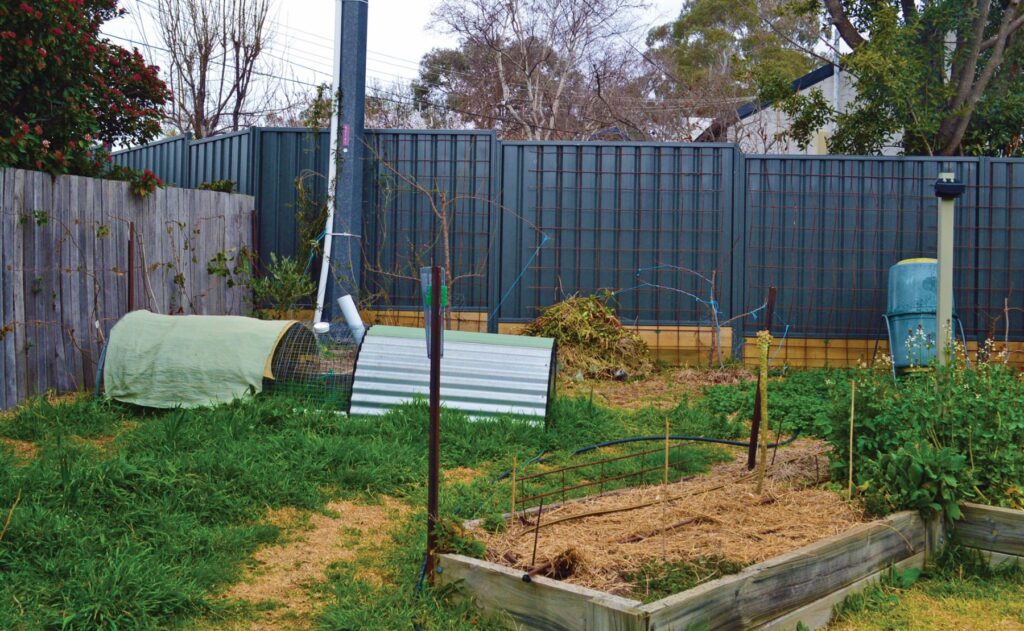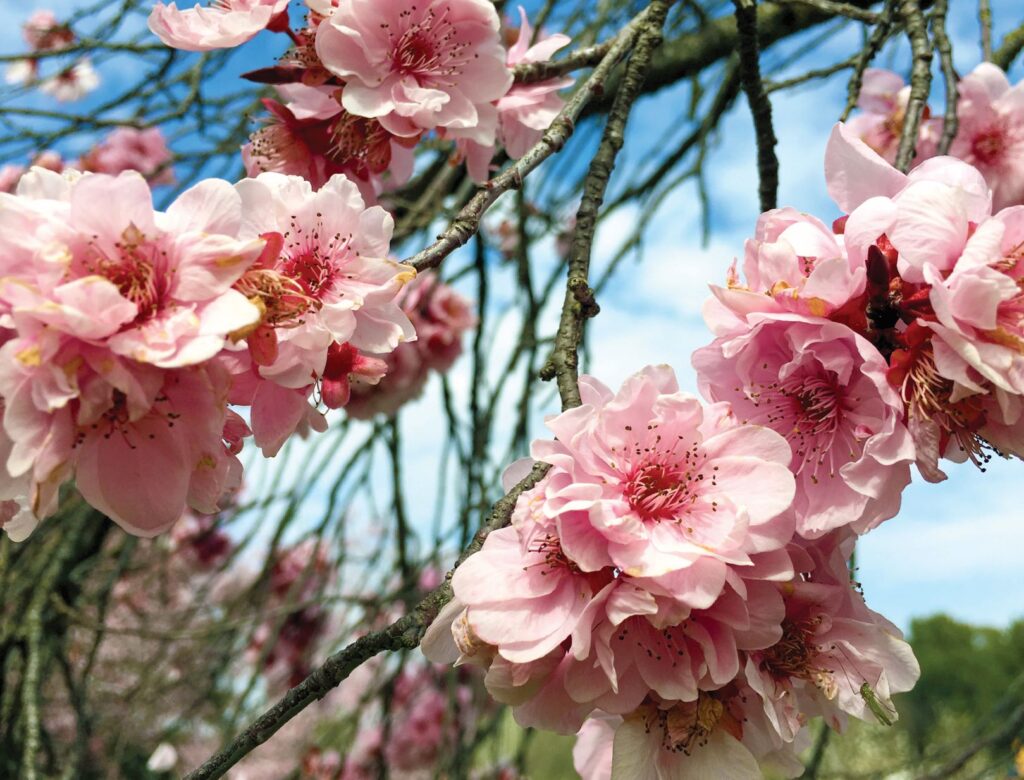
Ren and his family moved to their Canberra southside property two years ago. Ren spent much of his childhood growing up in a permaculture community in NSW, which has given him invaluable experience living both sustainably and productively. The block is 850sqm, with 550sqm for Ren’s immediate family, and 300sqm for their extended family. The 1970s house has a northerly aspect with a mild to moderate slope, ideal for passive solar retrofitting and productive gardening. In fact, they have improved their home efficiency rating from two stars to six!
The front yard, which was originally lawn, is now a vegetable-growing metropolis. Fast growing pioneer plants – both deciduous and evergreen – are being utilised as screening for privacy, nutrition and protection for young productive trees. Once the garden is mature, the pioneer plants will be ‘chopped and dropped’ as a beneficial mulch. Forty fruiting trees and vines have been planted and are establishing well, including grapes which are already producing. Ren has also grafted multiple fruiting varieties onto several trees – a savvy way of saving space, ensuring reliable pollination and fruiting, and security against inevitable seasonality. A mulberry tree is amongst the family’s most favoured plants, largely for its delectable fruit, which is not available in the shops. It was transplanted as a semi-mature specimen.

A water-efficient wicking bed is currently home to brassica crops and mixed greens. The surrounds have been given a more natural look using recycled hessian bags. The bags also protect the bed from UV rays and help maintain a more stable soil temperature.
The backyard houses stone fruit, espaliered fruiting trees and vegetables. There is also a composting toilet system and water tank, installed as part of the H2OK Demonstration Sites Grants Program.
The chicken coop is moved around the property as needed, and includes an innovative netting run as an attachment. Grain is spread throughout the run to encourage the chickens to work over the ground in readiness for future plantings, and with any overlooked grain being left to grow as a green manure crop.

There is a community kitchen refuse bin at the front of the property for those in the neighbourhood who don’t compost. Scraps are used for the chickens, worm farms and compost bins.
The garden is irrigated by tank water using drip irrigation. Sink water is also used in the garden via a dripper system. It is filtered through a bathtub worm farm, consisting of shade cloth at the base, 10cm of coarse gravel, a second layer of shade cloth, then topped with kitchen scraps and composting worms.
The property will be open during October as part of H2OK open weekend.
For more: environment.act.gov.au/h2ok-open-gardens

Canberra in bloom
Canberra’s urban forest comes to life in spring with a large variety of flowering trees showing off their vibrant colours. Transport Canberra and City Services (TCCS) have put together a map to guide you to some of our most spectacular flowering streetscapes. Do you know of a fantastic spring streetscape that is not already on the map? Why not send in your photos to include on the map.
For more: tccs.act.gov.au/city-living/trees/canberra-spring-trees-map
For more:



